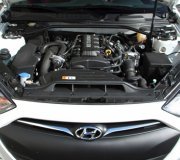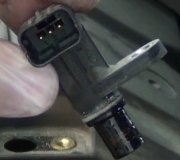This was sent to me some years ago by a mate the did a lot of performance work, we were discussing a simmer issue to yours so I hope that this is of some tech help, I am not sure where the original text came from, so I can't give due credit to the author.
Effect Of Changes In Cam Timing And Lobe Separation Angle
The table in the pic illustrate how variations in lobe separation angle and cam
timing will affect the behaviour of the engine in which the camshaft is installed.
EFFECTS OF ALTERING CAMSHAFT TIMING
Advancing Retarding
Begins Intake Event Sooner Delays Intake Closing Event
Open Intake Valve Sooner Keeps Intake Valve Open Later
Builds More Low-End Torque Builds More High-RPM Power
Decrease Piston-Intake Valve Clearance Increase Piston-Intake Valve Clearance
Increase Piston-Exhaust Valve Clearance Decrease Piston-Exhaust Valve Clearance
EFFECTS OF CHANGING LOBE SEPERATION ANGLE (LSA)
Tighten (smaller LSA number) Widen (larger LSA number)
Moves Torque to Lower RPM Raise Torque to Higher RPM
Increases Maximum Torque Reduces Maximum Torque
Narrow Power band Broadens Power Band
Builds Higher Cylinder Pressure Reduce Maximum Cylinder Pressure
Increase Chance of Engine Knock Decrease Chance of Engine Knock
Increase Cranking Compression Decrease Cranking Compression
Increase Effective Compression Decrease Effective Compression
Idle Vacuum is Reduced Idle Vacuum is Increased
Idle Quality Suffers Idle Quality Improves
Open Valve-Overlap Increases Open Valve-Overlap Decreases
Closed Valve-Overlap Increases Closed Valve-Overlap Decreases
Natural EGR Effect Increases Natural EGR Effect is Reduced
Decreases Piston-to-Valve Clearance Increases Piston-to-Valve Clearance
Effects Of Changes In Cam Timing And Lobe Separation Angle
EFFECTS OF ALTERING CAMSHAFT TIMING
Advancing Retarding
Begins Intake Event Sooner Delays Intake Closing Event
Open Intake Valve Sooner Keeps Intake Valve Open Later
Builds More Low-End Torque Builds More High-RPM Power
Decrease Piston-Intake Valve Clearance Increase Piston-Intake Valve Clearance
Increase Piston-Exhaust Valve Clearance Decrease Piston-Exhaust Valve Clearance
EFFECTS OF CHANGING LOBE SEPERATION ANGLE (LSA)
Tighten (smaller LSA number) Widen (larger LSA number)
Moves Torque to Lower RPM Raise Torque to Higher RPM
Increases Maximum Torque Reduces Maximum Torque
Narrow Power band Broadens Power Band
Builds Higher Cylinder Pressure Reduce Maximum Cylinder Pressure
Increase Chance of Engine Knock Decrease Chance of Engine Knock
Increase Cranking Compression Decrease Cranking Compression
Increase Effective Compression Decrease Effective Compression
Idle Vacuum is Reduced Idle Vacuum is Increased
Idle Quality Suffers Idle Quality Improves
Open Valve-Overlap Increases Open Valve-Overlap Decreases
Closed Valve-Overlap Increases Closed Valve-Overlap Decreases
Natural EGR Effect Increases Natural EGR Effect is Reduced
Decreases Piston-to-Valve Clearance Increases Piston-to-Valve Clearance
Sunday, July 26th, 2015 AT 3:03 AM


